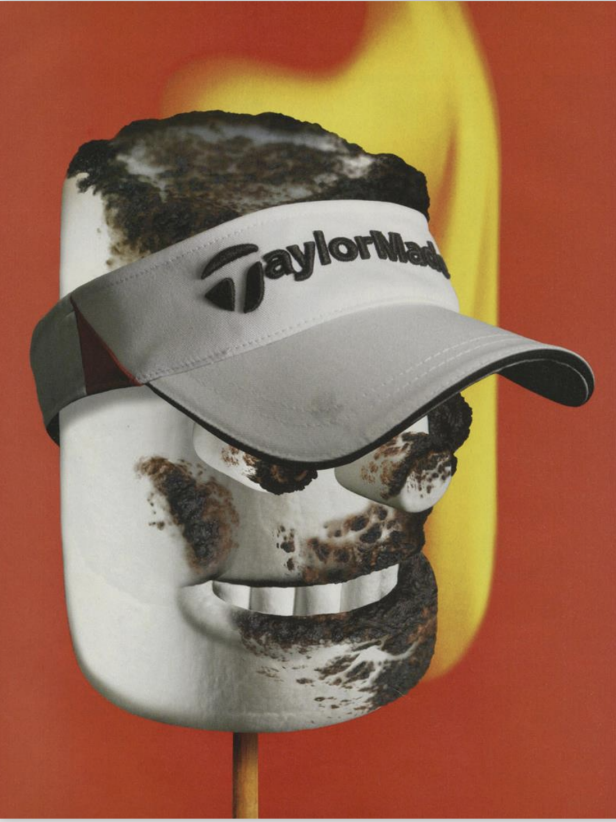Golfers, en masse, are typically slow to evolve. It took a long time before smoking during a round became an anomaly. It might take even longer before plastic water bottles are completely replaced by “refilling stations.” And as far as wearing ugly sweater vests on the course is concerned, well, we’ll just have to wait on Jason Day.
That said, is now finally the time the vast majority of golfers take heed to the growing incidences of skin cancer? Today is National Sunscreen Day so we hope so. As Golf Digest wrote back in 2008, “if you play golf, there’s a good chance you’ll get skin cancer.” That’s not hyperbole.
A few alarming statistics:
In the United States, one in five people (one in three of fair skin) will develop some form of skin cancer in their lifetime. Two people in the U.S. die of skin cancer every hour. More people are diagnosed with skin cancer than all other cancers combined.
We can keep going, but you get the point. Let’s make this golf season the season you actually make a real effort to protect your skin from the sun’s harmful ultraviolet rays. If you already do, we salute you.
The rest of you might not, yet, simply because there’s a fair amount of misinformation about sunscreen and other ways to stay cancer-free. Here are eight to remember.
1. Choose your sunscreen prudently. Generally speaking, wearing any sunscreen is better than none at all. But many products come with ingredients that could be harmful to you, says the Environmental Working Group, a nonprofit health-research organization. There are two types of sunscreens, those that block the sun’s rays through the use of chemicals and those that physically block the same through the use of minerals. Products with physical blockers, albeit tougher to apply, are much safer and better for your body. Look for titanium dioxide or zinc oxide on your sunscreen’s list of active ingredients. If it lists anything other than those two things, it’s likely a chemical that has been linked to some sort of harmful side effect/s.
2. Applying a physical blocker isn’t as tough as it used to be. The reason chemical blockers are so popular is that they can be sprayed on. It literally takes seconds to cover your whole body. And reapplying is equally as convenient. But there is good news for golfers who want to switch to zinc or titanium products. Several companies now offer these effective and highly recommended mineral screens in sprays, making it more convenient for golfers to cover their skin and reapply often. One caveat: Do not inhale while applying. These products might contain nanoparticles that are thought to cause lung cancer if breathed in large doses.
3. Check your shirts and hats. All clothing offers some protection from ultraviolet rays, however some are specifically designed to do the job thoroughly. Look for shirts, hats, etc., that have a high UPF (ultraviolet protection factor). Many of the game’s top brands make clothing with sun exposure partially in mind. A few other things to consider: Vibrant colors offer a higher UPF than dull ones; a new shirt off the rack isn’t as effective as it will be after it has been washed a few times because shrinkage closes up the holes in the fabric; synthetic fabrics, like polyester, generally offer more protection than natural fabrics such as cotton.
4. You’re on the clock. Most sunscreens lose their efficacy after two hours, so reapplying at least once during a round is crucial to staying protected. And when you see a sunscreen advertise itself as being higher than SPF 30, it’s a marketing gimmick. While it’s likely true that SPF 50 offers 50 times the normal protection against the sun, it’s not going to matter in two hours when its usefulness wears off. SPF 15 or 30 does the job equally as well (and it’s probably less expensive).
5. Don’t forget to pucker up. Even dedicated sunscreen users often forget that their lips are very susceptible to sun damage, especially the lower lip, which is 12 times more likely to be affected. Wearing lip balm with adequate SPF (15 or higher) is important. And unlike sunscreen, these balms should be reapplied more often and more generously than you might expect. Reapplying every three holes is a good idea. Their protection doesn’t last nearly as long as sunscreen for the rest of your body.
6. Consider going early (or late). The sun’s damaging UVA rays aren’t nearly as powerful around dawn or dusk, so there’s something to be said for being a dew sweeper or a daylight chaser. Plan your tee times accordingly, especially in peak summer months.
7. Don’t forget to cover two important spots. You’re likely protecting one hand with a golf glove, but what about the other? Same goes for your ears. A ballcap is stylish but does nothing to help a very vulnerable part of your body to sun exposure.
8. Get checked. Most moles, freckles and similar skin blemishes are the result of unhealthy sun exposure. Some are considered precancerous (actinic keratosis). You should get examined at least once a year by a dermatologist. And don’t forget to have your scalp checked. If for some reason you notice a rough patch or bump on your skin, and its shape is changing or it’s getting bigger/worse, get to a doctor immediately.
If you want our picks for the best sunscreens for golf, here are some to consider:

